First compiled in 1996, this bibliography was updated most recently in September, 2013.
Who Runs the Country?
A Bibliography on the U.S. Power Structure
Mary Meehan
Understanding the power structure of the United States helps those who analyze nearly any serious policy issue, especially those who want to change policies. It is not really true that "you can't fight city hall"--or the U.S. power structure--but it certainly helps to know what and whom you are fighting.
A wealth of material, some written by members of the power structure and some by critics, shows how the upper class and its institutions--private schools and clubs, Ivy League universities, the foundations and "think tanks"--shape and often control key policy decisions.
This is not to say that people within the power structure agree with each other on everything. Sometimes there are fights within the "power elite." One could even argue that there are two different power elites--a conservative one and a liberal one--and that upper-class members have enormous influence in both.
Books and articles are listed here in chronological order. Most are in the General section, but there are separate sections on Foreign Policy and on Eugenics and Population Control. You probably won't agree with everything in these sources. (Nor do they always agree with one another!) But you will find in them many insights that help explain recent U.S. history and our current problems.
General
C. Wright Mills, The Power Elite. London: Oxford University Press, 1956. A classic analysis of the U.S. power structure; includes chapters on "The Very Rich," "The Corporate Rich," "The Warlords" and "The Political Directorate." Mills challenges some American legends, as when he says: "It is not usual, and it never has been the dominant fact, to create a great American fortune merely by nursing a little business into a big one....It is difficult to climb to the top, and many who try fall by the way. It is easier and much safer to be born there."
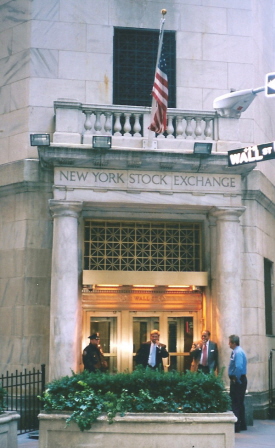
Carroll Quigley, Tragedy and Hope: A History of the World in Our Time. New York: The Macmillan Company, 1966. Prof. Quigley, an historian at Georgetown University, had access to key documents about power-elite groups. See, especially, pp. 935-949 on Wall Street and the political left and pp. 950-956 on the "international Anglophile network" (the Round Table Groups, including the Council on Foreign Relations).
David Horowitz, "Billion Dollar Brains: How Wealth Puts Knowledge in its Pocket," Ramparts 7, no. 12 (May 1969), 36-44. Stresses enormous influence of family and corporate wealth, acting through private foundations such as Rockefeller and Ford, on the development of the prestige universities.
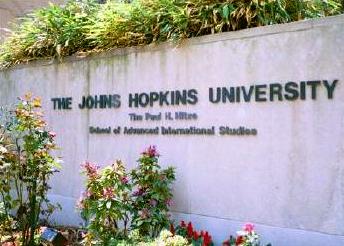
G. William Domhoff, The Higher Circles: The Governing Class in America. New York: Random House, 1970. One of many books on the U.S. power structure by the leading academic expert on the subject. Especially interesting are chapters on "How the Power Elite Make Foreign Policy" and "How the Power Elite Shape Social Legislation." Also helpful is a chapter in which Domhoff explains where his views of the power structure differ from those of some conservatives.
Peter Collier and David Horowitz, The Rockefellers: An American Dynasty. New York: Holt, Rinehart and Winston, 1976. Very readable account of this powerful family. Does not explain their many eugenics connections, except at times under other labels, but shows how they use power. Also describes inner conflicts that family wealth and power produced in the "Cousins" generation (the children of David Rockefeller and their cousins). Has some priceless quotes, e.g., that one Rockefeller "had the wealth to buy loyalty and the breeding to buy it in such a way that neither party in the transaction had to admit a deal had taken place."
G. William Domhoff, The Powers That Be: Processes of Ruling Class Domination in America. New York: Random House, 1978. Focuses on how the rich and powerful stay that way. Deals with special interests, policy-making, candidate selection, and opinion-shaping.
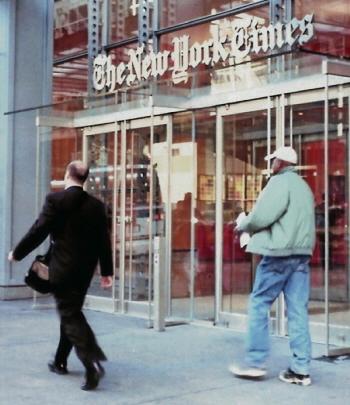
Sidney Blumenthal, The Rise of the Counter-Establishment: From Conservative Ideology to Political Power. New York: Times Books/Random House, 1986. Describes how political conservatives, dismayed by the liberal establishment, built their counter-establishment of intellectuals, publications, think tanks and political power. Includes an interesting chapter on neoconservatives, who "thrive on ideological combat....No one is frowned upon for throwing food and screaming at the dinner table; it's all in the family."
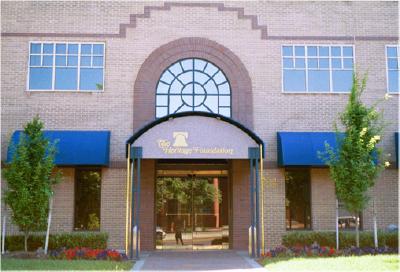
Heritage Foundation, Washington, D.C.
Lewis H. Lapham, Money and Class in America. New York: Ballantine Books, 1988. An insider's critical view of the wealthy, with stress on their attitudes. Lapham says that: "The rich object to the very thought of other people also becoming rich--crowding the golf courses, commanding tables at '21,' taking up too much of the available light, space, air and publicity." He is not kind to the media, either: "...the American press is, and always has been, a booster press, its editorial pages characteristically advancing the same arguments as the paid advertising copy."
Teresa Odendahl, Charity Begins at Home: Generosity and Self-Interest Among the Philanthropic Elite. New York: Basic Books, Inc., Publishers, 1990. Claims that "American philanthropy is a system of 'generosity' by which the wealthy exercise social control and help themselves more than they do others." Also suggests that we "need hard-nosed muckraking reporting of the charity scene."
James A. Smith, The Idea Brokers: Think Tanks and the Rise of the New Policy Elite. New York: Macmillan, 1991. Traces the rise of research institutes or, "think tanks," and their influence on public policy. Noting that President Woodrow Wilson feared the idea of a "government of experts," Smith suggests that "much of what Wilson feared has come to pass..."

William Greider, Who Will Tell the People: The Betrayal of American Democracy. New York: Simon & Schuster, 1992. Greider focuses on corporate power and its overwhelming influence on politics--especially on economic, labor, and toxic-waste issues. Chapters include "Who Owns the Democrats?" and "Rancid Populism" (about the Republicans) and "Angle of Vision" (a critique of newspapers). Greider also analyzes successes and failures of grassroots groups that try to fight corporate power.
Meg Greenfield, Washington. New York: Public Affairs, 2001. A view of the human side of powerful people in Washington, D.C. Suggests that the powerful keep playing roles they acquired in their families and high schools, such as "the good child, the head kid, the prodigy, and the protégé." Also offers a useful insider's account of the media in Washington. (The late Meg Greenfield was editorial page editor of the Washington Post for many years.)
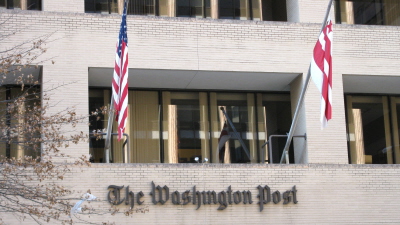
G. William Domhoff, Who Rules America? Power, Politics, and Social Change, 5th ed. New York: McGraw-Hill, 2006. Prof. Domhoff, a sociologist, has been studying the power elite for decades. He says banks and corporations, dominated by the upper class, "form a corporate community that shapes the federal government on the policy issues of interest to it..." He acknowledges, though, that there are occasional policy conflicts "among rival corporate leaders" and that the recent alliance of the corporate coalition with Christan conservatives is "sometimes an uneasy one." Contends that the liberal-labor alliance is far less powerful than the conservative one--something many observers may dispute now, given the last two presidential elections. But Domhoff offers a wealth of ideas and insights. His website provides more.
Foreign Policy
Laurence H. Shoup and William Mintner, Imperial Brain Trust: The Council on Foreign Relations and United States Foreign Policy. New York: Monthly Review Press, 1977. Special stress on the Council's overwhelming influence on secret studies during World War II, financed by the Rockefeller Foundation, that largely determined postwar foreign policy.
John Prados, Keepers of the Keys: A History of the National Security Council from Truman to Bush. New York: William Morrow, 1991. Historian John Prados offers a valuable account of the NSC's origins and first 43 years. He provides colorful--though often appalling--information on how different presidents used the NSC to formulate and run their foreign policies and their wars.

David Rothkopf, Running the World: The Inside Story of the National Security Council and the Architects of American Power. New York: Public Affairs/Perseus Books, 2004. The author once worked in the Clinton Administration and later was managing director of Henry Kissinger's consulting firm. He traces NSC history from President Harry Tuman's time through President George W. Bush's first years in office. Using interviews with many key actors, he shows how the NSC actually works. Although a fine writer, he downplays NSC decisions on CIA covert action.
Tim Weiner, Legacy of Ashes: The History of the CIA. New York: Doubleday, 2007. The author has studied and reported on U.S. intelligence operations for many years. He describes CIA covert operations, including schemes for assassinating foreign leaders and/or overthrowing their governments. Shows how various presidents have used the Agency. Contends that the CIA generally has failed to accomplish its core mission of providing accurate intelligence for government leaders.
Peter Van Buren, We Meant Well. New York: Metropolitan Books/Henry Holt, 2011. A devastating account of U.S. reconstruction projects in Iraq several years after the 2003 U.S. invasion. Van Buren, who worked in Iraq as a U.S. Foreign Service Officer in 2009, describes poorly-planned programs that seemed oriented toward ribbon-cutting ceremonies and other PR instead of helping Iraqis who desperately needed clean water, electricity, sanitation, and jobs. (Note: Van Buren uses pseudonyms for most people and has changed or obscured some timing.)
Eugenics and Population Control
Warren Weaver, U.S. Philanthropic Foundations: Their History, Structure, Management, and Record. New York: Harper & Row, 1967. See pp. 365-374 for Frederick Osborn's essay, "American Foundations and Population Problems." Here the key U.S. eugenics strategist shows how the foundations supported early work in population control.
Steve Weissman, "Why the Population Bomb Is a Rockefeller Baby," Ramparts, May 1970, 42-47. A radical says of the Rockefellers and other elites after World War II: "All they could see was people, people, people, each one threatening the hard-won stability which guaranteed access to the world's ores and oil, each one an additional competitor for the use of limited resources."

Home of the Rockefeller Foundation, New York, N.Y.
Frank W. Notestein, "Reminiscences: The Role of Foundations, The Population Association of America, Princeton University and the United Nations in Fostering American Interest in Population Problems," Milbank Memorial Fund Quarterly 49, no. 4 (Oct. 1971), part 2, 67-85. A leading eugenicist shows how he and colleagues used powerful institutions to advance population control. But he neglects to mention their eugenics links.
John and Pat Caldwell, Limiting Population Growth and the Ford Foundation Contribution. London & Dover, N.H.: Frances Pinter (Publishers), 1986. Valuable information, especially when checked against a eugenics membership list. Authors mention eugenics occasionally, but misleadingly imply that it was not an active movement in the period of which they write.
John Ensor Harr and Peter J. Johnson, The Rockefeller Conscience: An American Family in Public and in Private. New York: Charles Scribner's Sons, 1991. An admiring portrait of the late John D. Rockefeller 3rd by two former employees. Has important information on JDR 3rd's involvement in population control, abortion, and euthanasia.
Mary Meehan, "Eugenics and the Power Elite," Social Justice Review, November-December, 1997, 167-70. (Revised version available here.) Says that Planned Parenthood and similar groups are "like wind-up toys that eugenicists started" long ago and that "still march, relentlessly, along their appointed route." Also stresses that: "Without the money and the coercive power of the state, eugenics would lose much of its drive."
Mary Meehan, "The Road to Abortion," Human Life Review, Fall 1998, 76-89, and Winter 1999, 68-82. (See expanded version here.) Based on over 20 manuscript collections, this article shows how powerful eugenicists have pressed population control and abortion at home and abroad. Documents their use of private groups, the U.S. government, and the United Nations to accomplish their goals. Says population controllers "rarely, if ever, ask themselves, 'Who appointed me to be General Manager of the Universe?'"
Mary Meehan, "Billionaires Quietly Fund Populaton Control," Soul, Jan.-Feb. 1999, 18-19. (See revised and expanded version here.) Describes population-control efforts of four wealthy donors: Ted Turner, Warren Buffett, Bill Gates, and George Soros. Notes that "Soros, like Turner, has five children but worries that other people are having too many."
Mary Meehan, "What's Wrong with the Science Establishment?" Human Life Review, Fall 2000, 63-85. (Online version here.) Documents heavy eugenics influence on the American Association for the Advancement of Science and the National Academy of Sciences. Says that if scientists finally provoke "a great public backlash, they will have no one to blame but themselves."
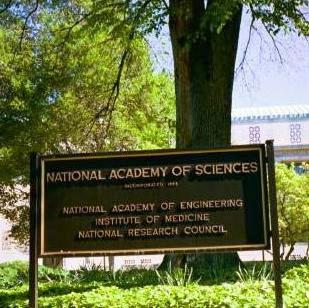
Mary Meehan, "Triumph of Eugenics in Prenatal Testing," Human Life Review, Summer 2009, 28-40 and Fall 2009, 87-104. (Online version: part 1 and part 2.) Shows how the American Society of Human Genetics, the March of Dimes, and the U.S. government have promoted the prenatal testing that leads to eugenic abortion. Suggests ways to challenge their pressures. Also describes helpful resources for parents whose children have handicaps.